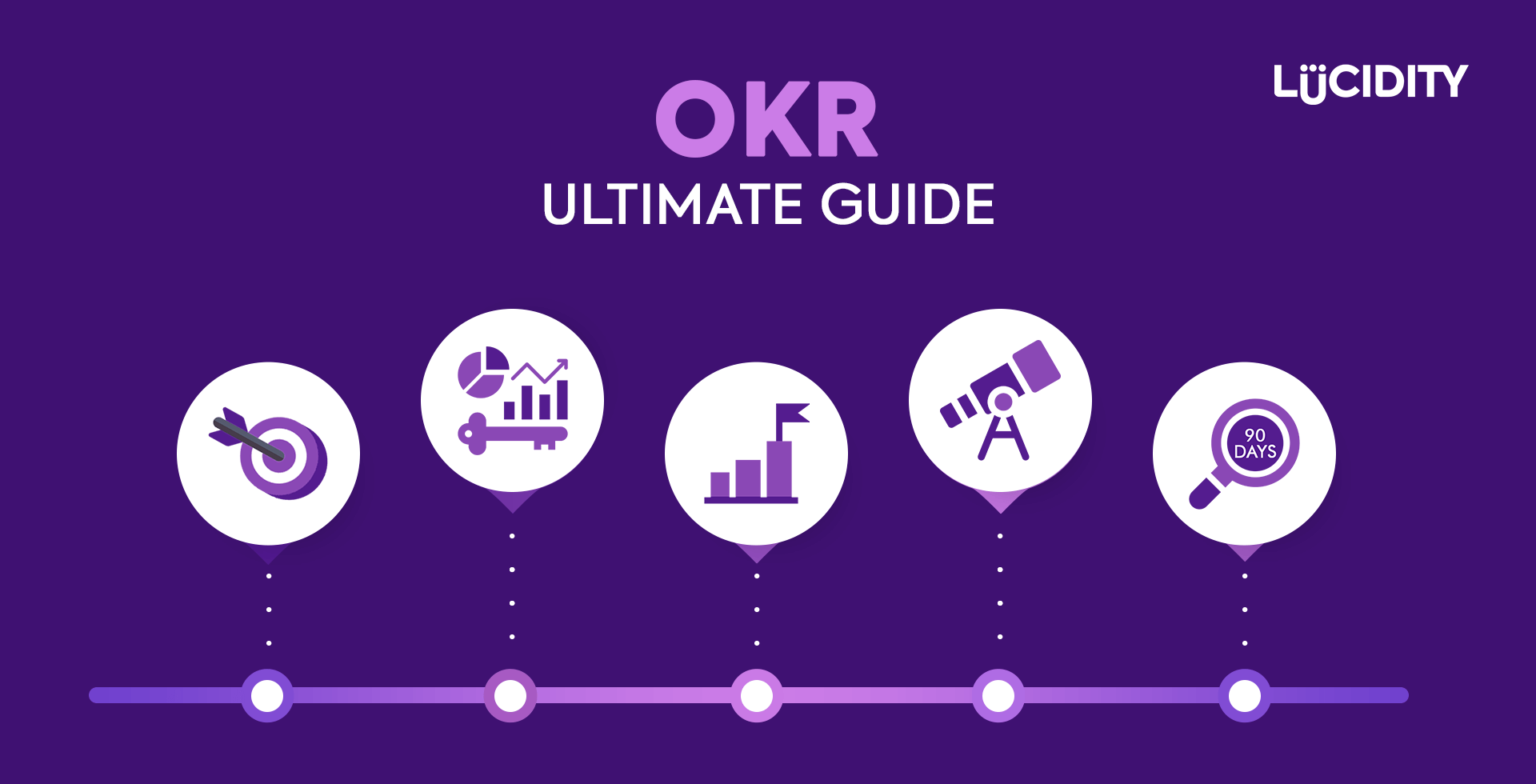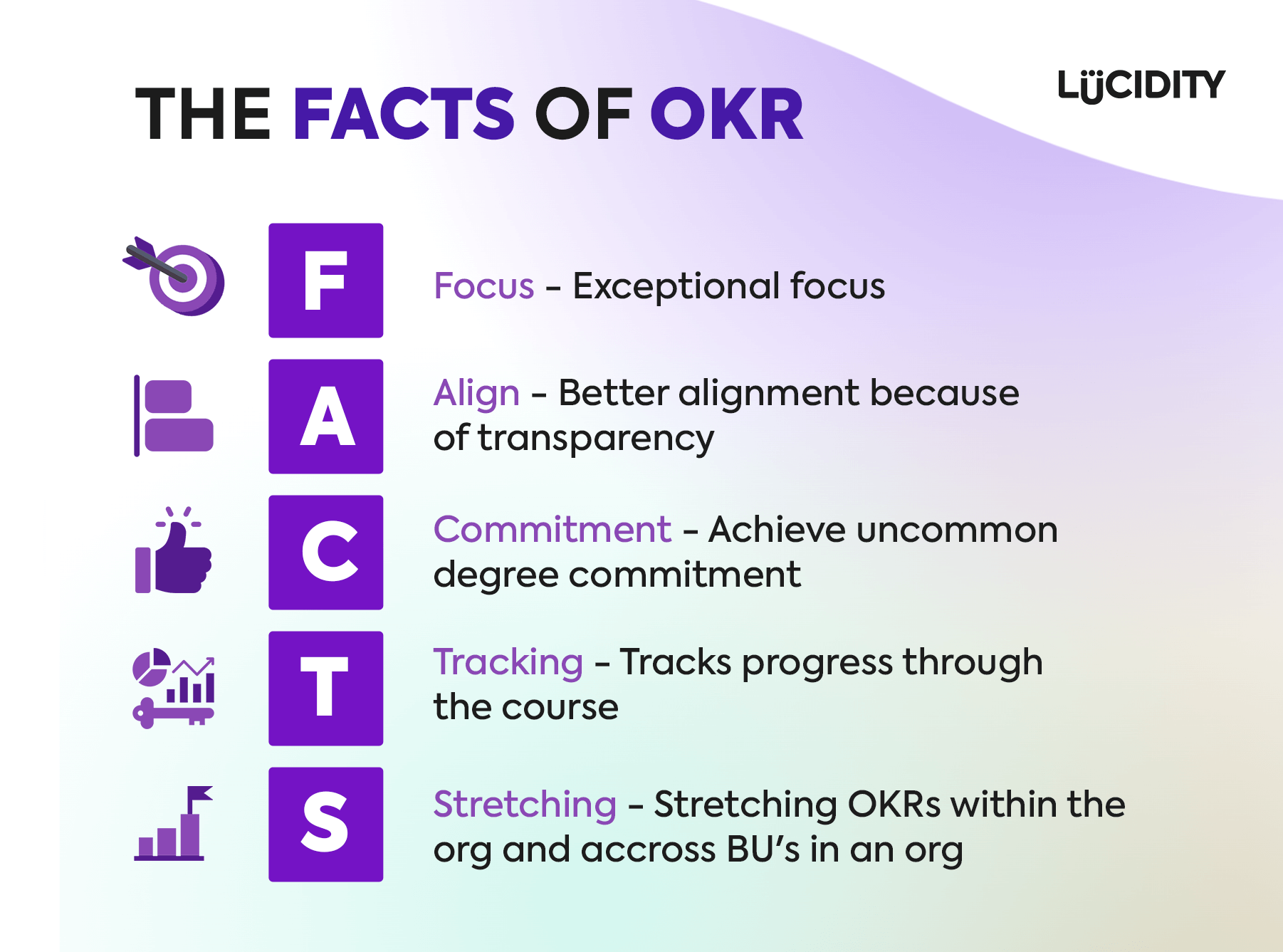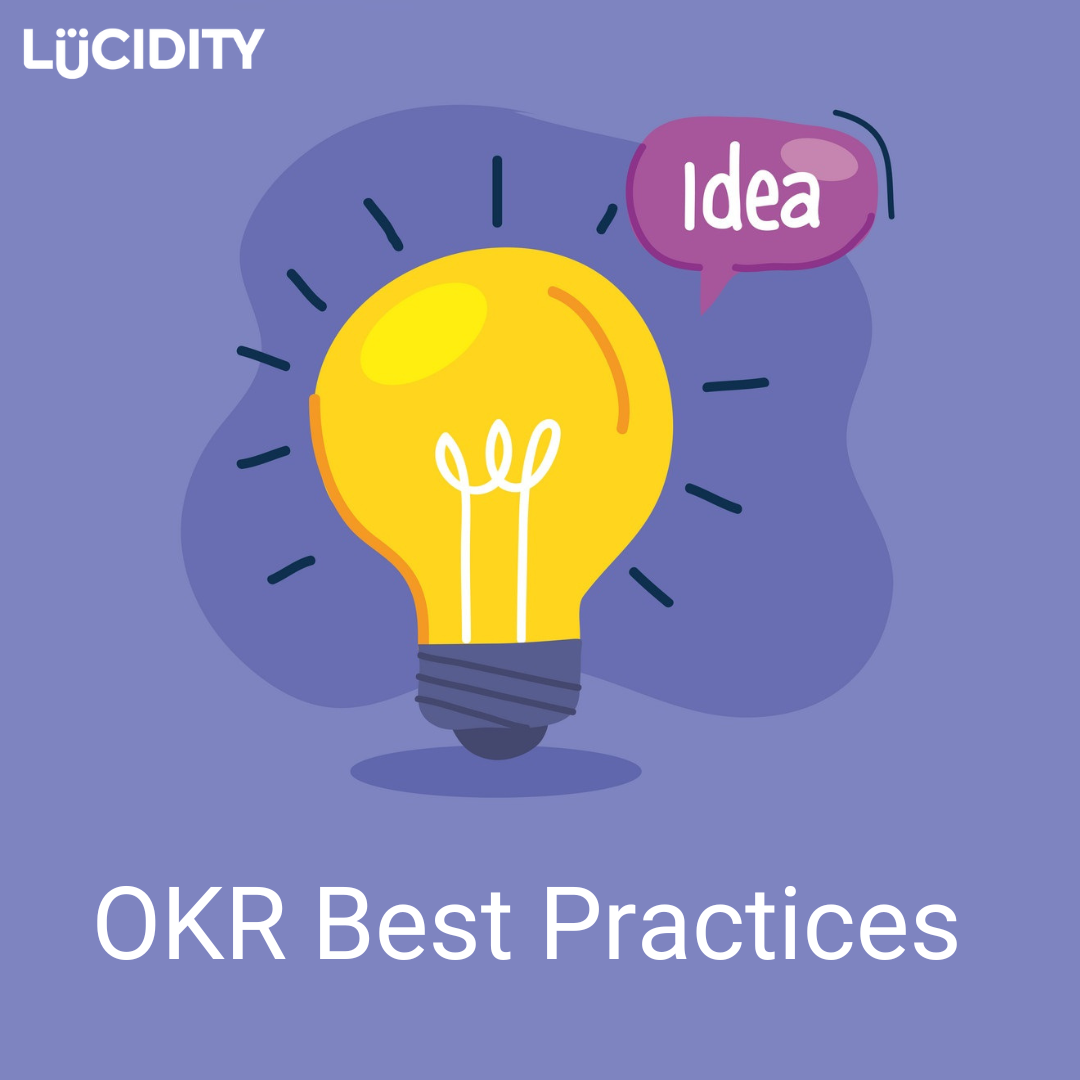Strategic planning is essential to a company because it provides a map towards achieving your goals. If you are serious about the success of your business and driving growth, you’ll need to have a well-thought-through strategy and then use a clear framework for setting targets and tracking performance.
OKRs are a goal-setting framework used by individuals, teams, and organizations to help define goals — or objectives — and then track the outcome. They have a deep history going back to the 1950s. The framework is designed to help establish far-reaching goals in days instead of months. Companies that use and evangelize the OKR framework include some of the world’s leading organizations, such as Adobe, Amazon, Google, Intel, LinkedIn, Microsoft, and Netflix.
In this article we’ll define an OKR, look at how they’re used and provide some examples of OKRs.
OKR Meaning
OKR stands for Objective and Key Results. It has two elements derived from its name: Objective – a significant, concrete, clearly defined goal; and Key Results (measurable success criteria used to track the achievement of that goal).
OKRs are focused on driving new initiatives and hitting new strategic objectives. It is contextual, time-based and specific to a new focus for the business. They are most commonly used quarterly, with different OKRs for each quarter.
A business looking to make bold moves and significant changes might prefer the more aggressive leaning of OKRs. Companies tend to use OKRs for big, ambitious plans. There’s a widely held belief that the objectives and key results you set with OKRs should be so ambitious that they’re bordering on impossible! The OKR ethos is about driving your teams forward to make giant leaps, strive for significant growth and push their performance to the max.
To determine OKR, you only need to answer two questions:
– Where or what do I want to achieve? (objective)
– How do I know I have achieved the set goals? (key results)
Benefits of Using OKRs
The benefits of utilizing the OKR framework are evident as many companies, such as Adobe, Google, and Netflix, have implemented OKRs and achieved astounding success. But what makes OKRs so beneficial in not only setting but achieving the most audacious goals of teams and individuals? Why should you start using OKRs?
In an interview with Harvard Business Review, John Doerr says there are five key OKR benefits. These five benefits spell out the acronym “FACTS.”
Focus: Because you are limited in the number of objectives you can set (there can be more than one, but always less than seven), you increase the focus of your goals because of this inherent necessity to limit the number of things to focus on, OKRs force upfront choice-making. By standing firmly behind a few top-line OKRs, leaders give their teams a compass and a baseline for assessment.
Alignment: After these high-level objectives are set, the strategy goes from top-down to bottom-up: OKRs give teams the autonomy to decide how to execute goals and ensure that their daily work is always tied to company goals. In this way, OKRs simultaneously prioritize business goals while encouraging employee engagement.
Commitment: OKRs align the company and focus teams’ efforts, which, in turn, requires commitment. Resources are allocated, and deadlines are set. Since everyone is working toward the same goals, progress needs to be transparent between team members.
Tracking: Tracking OKRs from output to outcome is why management by objectives is so popular with top-tier companies. Keep your target metrics at eye level to ensure that objectives are met on time. Avoid unnecessary meetings by making progress tracking easy, accessible, and transparent.
Stretching: Objectives are meant to be difficult, pushing organizations to shoot for the moon, striving for what might seem almost impossible. As John Doerr says, “Larry Page of Google is the high priest of 10x-ing everything, stretching further. He’ll say, ‘I’d rather have the objective be to go to Mars, and if we fall short, we’ll get to the moon. This means that you shouldn’t be afraid to fail–but be sure you have the tools, resources, and means to ultimately get there.
Find out how Lucidity can help you align your team with OKRs.
What Are Some Examples of OKRs?
When implementing OKR, it is essential to establish key results that are SMART: specific, measurable, achievable, and time-bound. Here are some examples:
Objective: Grow word of mouth marketing
Key Results:
- Decrease customer service response time by 50%
- Plan and roll out new customer email marketing by the end of the quarter
- Increase NPS score by 50%
- Increase customer reviews on external review sites by 100 reviews
- Grow positive social mentions by 60%
Objective: Increase the average order value of all eCommerce customers
Key Results:
- Introduce free shipping with minimum order value by the end of the quarter
- Increase upsell conversion in email marketing by 20%
- Increase the number of product page cross-sells by 50%
- Establish a customer loyalty scheme and secure 3000 members
- Increase use of first purchase discount by 40%
Objective: Create a workplace people love and increase employee retention
Key Results:
- Increase employee net promoter score to 35
- Get employee attendance of monthly social to 90%
- Put all managers through coaching training
- Increase training satisfaction score to 85%
- Increase average compa-ratio to 100%
OKR Best Practices
Think big – focus on growth, innovation, positive change and significant results. This is not the time to be cautious and sensible; you want to be setting bold and ambitious objectives here. If you’ve chosen to use the OKR framework, then embrace it and GO BIG.
Just focus on what will truly make a difference – you want a focused list of a few OKRs, so everyone has laser focus, distractions are minimized, and you stand the best chance of getting the jobs done. Don’t try and cover everything each quarter. Remember, you can always save an objective for a future quarter.
Communicate your OKRs to the whole business – if you’ve gone big with your OKRs, then they will be motivating for everyone to see. They will paint a picture of exciting growth and a successful future. Make sure everyone knows the big ambitions you have, and it will help get your people into a bold, growth mindset.
Don’t expect to hit every key result. This seems like an odd thing to say, but OKRs are supposed to be ambitious – really ambitious – so ambitious that they are extremely hard to actually hit. But that’s OK – you will be stretching yourselves, pushing your performance and achieving more as a result. If you find you are achieving all of your key results to the maximum, then, potentially, your OKRs are not aggressive enough.
Utilize strategy software to simplify OKR tracking and reporting.Lucidity enables businesses to collate data effectively and provides full reporting transparency, both of which are necessary ingredients for the OKR framework to succeed.
OKR Software
When it comes to setting goals and being successful, the one organization that comes to our mind is Google. Google’s OKRs are legendary, and a lot of the company’s success can be attributed to its OKRs.
Lucidity makes your OKR framework simple to understand and execute. With Lucidity, you can organize your objectives, key results, and initiatives and measure your progress with ease. You can visualize the connection between team initiatives and company goals with unlimited hierarchy levels. With a wonderfully simple tree structure, your OKRs are made crystal clear so everyone can get on with making them happen.














